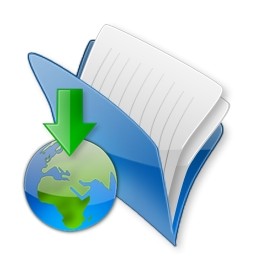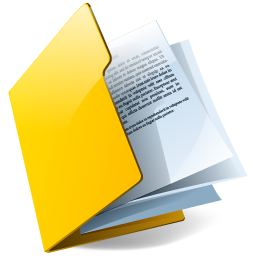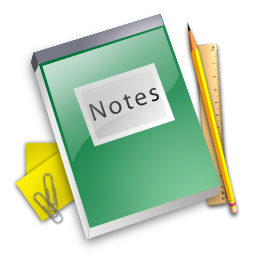Economics
Study notes, curriculum and question papers on class 12 Economics presented as downloads, tests and videos covers the following topics. Introduction to Economics, Theory of Consumer Behaviour, Production and Costs, The Theory of the Firm Under Perfect Competition, Market Equilibrium, Non-Competitive Markets, National Income Accounting, Money and Banking, Income Determination, The Government: Budget and the Economy, Open Economy Macroeconomics

CBSE, JEE, NEET, CUET
Question Bank, Mock Tests, Exam Papers
NCERT Solutions, Sample Papers, Notes, Videos

myCBSEguide App
Complete Guide for CBSE Students
NCERT Solutions, NCERT Exemplars, Revison Notes, Free Videos, CBSE Papers, MCQ Tests & more.
Download CBSE class 12 Economics study material in PDF format. MyCBSEguide provides solved papers, board question papers, revision notes and NCERT solutions for CBSE class 12 Economics. The topics included are Introduction to Economics, Theory of Consumer Behaviour, Production and Costs, The Theory of the Firm Under Perfect Competition, Market Equilibrium, Non-Competitive Markets, National Income Accounting, Money and Banking, Income Determination, The Government: Budget and the Economy, Open Economy Macroeconomics
Part A: Introductory Microeconomics
Unit 1: Introduction
Meaning of microeconomics and macroeconomics
What is an economy? Central problems of an economy: what, how and for whom to produce; concepts of production possibility frontier and opportunity cost.
Unit 2: Consumer's Equilibrium and Demand
Consumer's equilibrium - meaning of utility, marginal utility, law of diminishing marginal utility, conditions of consumer's equilibrium using marginal utility analysis.
Indifference curve analysis of consumer's equilibrium-the consumer's budget (budget set and budget line), preferences of the consumer (indifference curve, indifference map) and conditions of consumer's equilibrium.
Demand, market demand, determinants of demand, demand schedule, demand curve and its slope, movement along and shifts in the demand curve; price elasticity of demand – factors affecting price elasticity of demand; measurement of price elasticity of demand - (a) percentage change method and (b) geometric method (linear demand curve); relationship between price elasticity of demand and total expenditure.
Unit 3: Producer Behaviour and Supply
Production function – Short-Run and Long-Run
Total Product, Average Product and Marginal Product.
Returns to a Factor
Cost: Short run costs - total cost, total fixed cost, total variable cost; Average cost; Average fixed cost, average variable cost and marginal cost-meaning and their relationships.
Revenue - total, average and marginal revenue - meaning and their relationships.
Producer's equilibrium-meaning and its conditions in terms of marginal revenue-marginal cost.
Supply, market supply, determinants of supply, supply schedule, supply curve and its slope, movements along and shifts in supply curve, price elasticity of supply; measurement of price elasticity of supply - (a) percentage-change method and (b) geometric method.
Unit 4: Forms of Market and Price Determination under Perfect Competition with simple applications.(31 Periods)
Perfect competition - Features; Determination of market equilibrium and effects of shifts in demand and supply.
Other Market Forms - monopoly, monopolistic competition, oligopoly - their meaning and features.
Simple Applications of Demand and Supply: Price ceiling, price floor.
Part B: Introductory Macroeconomics
Unit 5: National Income and Related Aggregates
Some basic concepts: consumption goods, capital goods, final goods, intermediate goods; stocks and flows; gross investment and depreciation.
Circular flow of income; Methods of calculating National Income - Value Added or Product method, Expenditure method, Income method.
Aggregates related to National Income: Gross National Product (GNP), Net National Product (NNP), Gross and Net Domestic Product (GDP and NDP) - at market price, at factor cost; National Disposable Income (gross and net), Private Income, Personal Income and Personal Disposable Income; Real and Nominal GDP.
GDP and Welfare
Unit 6: Money and Banking
Money - its meaning and functions.
Supply of money - Currency held by the public and net demand deposits held by commercial banks.
Money creation by the commercial banking system.
Central bank and its functions (example of the Reserve Bank of India): Bank of issue, Govt. Bank, Banker's Bank, Controller of Credit through Bank Rate, CRR, SLR, Repo Rate and Reverse Repo Rate, Open Market Operations, Margin requirement.
Unit 7: Determination of Income and Employment
Aggregate demand and its components.
Propensity to consume and propensity to save (average and marginal).
Short-run equilibrium output; investment multiplier and its mechanism.
Meaning of full employment and involuntary unemployment.
Problems of excess demand and deficient demand; measures to correct them - changes in government spending, taxes and money supply.
Unit 8: Government Budget and the Economy
Government budget - meaning, objectives and components.
Classification of receipts - revenue receipts and capital receipts; classification of expenditure – revenue expenditure and capital expenditure.
Measures of government deficit - revenue deficit, fiscal deficit, primary deficit their meaning.
Unit 9: Balance of Payments
Balance of payments account - meaning and components; balance of payments deficit-meaning.
Foreign exchange rate - meaning of fixed and flexible rates and managed floating.
Determination of exchange rate in a free market.

myCBSEguide
Trusted by 1 Crore+ Students

Test Generator
Create papers online. It's FREE.

CUET Mock Tests
75,000+ questions to practice only on myCBSEguide app
 myCBSEguide
myCBSEguide







